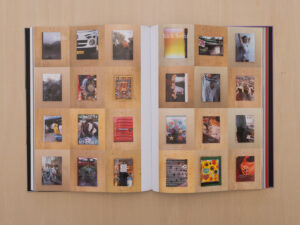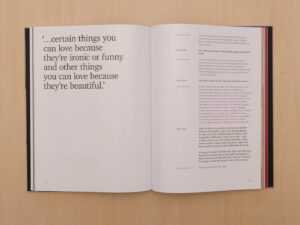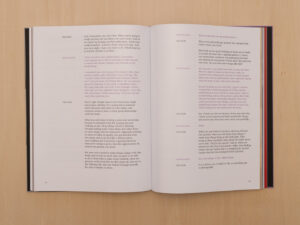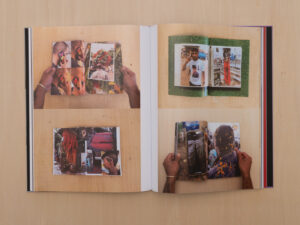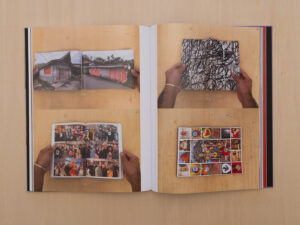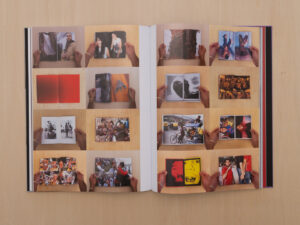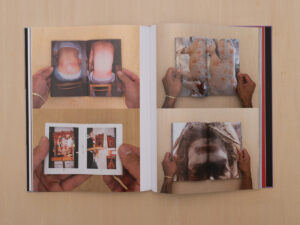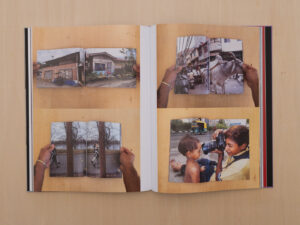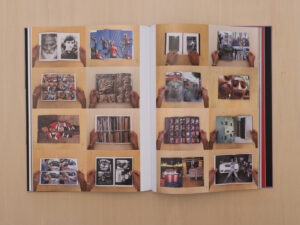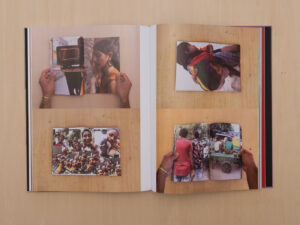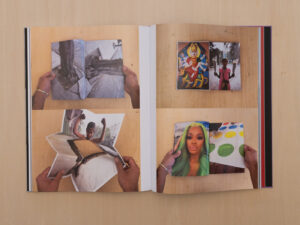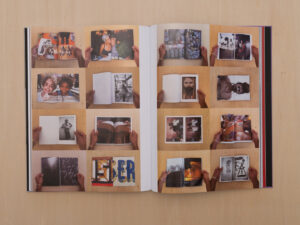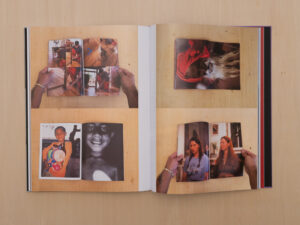True Photo Journal Issue 10
- Information
Featuring an interview with David Strettell of Dashwood Books;
NS: It’s funny, you clicked record and then I was like, ‘Now I don’t know what to say.’ Maybe let’s not even start with the projects we’ve made together, but instead start at the beginning—tell me about opening Dashwood.
DS: Well, next year will be the store’s twentieth anniversary. So, that’s 2005. I remember, it was six months before the birth of my daughter, in January 2006. Before then I worked at Magnum Photos for like twelve years, probably five years too many. I learnt a lot, but by the end of it, I wanted to start my own business. And you and I met a few years after we opened the store, so in 2008.
It’s all a bit of a blur, actually. I think the first publication I did was with Ari Marcopoulos, since he’s got a really good sense of book-making himself. Then I did a couple of books with Ryan McGinley, and that really helped establish me as being not just a bookstore but being a publisher as well.
Right, because I feel like you sit so well on both sides of it. Like me, you’re obsessed with books. We’re sitting in a room that’s totally stacked with books and there’s another one right upstairs.
Yes, it’s amazing, but also stresses me out so much. I’ve been saying that for twenty years.
Us meeting must have been the first week or two that I’d moved to New York. I decided to move here to go to school. But I remember—and I’ve never really said this out loud—coming to Dashwood and places like this was part of the reason why I ended up not actually going to school, and instead chose to do my own work. Which I think, in the end, was very beneficial to having the voice that I have now.
You were making zines pretty much straight away, right? You brought me some that you’d made. There was that funny one about Abercrombie & Fitch. And Bruce Weber was a huge client of mine at the time. My wife worked with him quite a lot, and she was like, ‘Don’t show him that zine; he’ll be really upset.’ Which is quite funny because it was taking the piss out of… What was that store?
Yes, it was Hollister.
Yeah, that’s right. It was Hollister, where they used to have the topless male models standing outside. That store was hilarious.
Yes, everything about it was so absurd. Retroactively, I can draw a line from that to something I would do now. It was me just interacting with the store, like crouching behind the couch, and the place was so strange to me—with the smell and the topless guys walking around, it was almost like travelling without having to go anywhere.
Yes, but it’s quite telling about your work because it wasn’t mean in any way. It was ironic, but you’re not standing next to the topless guy like, ‘What an idiot.’ Which is a route I think would be easy for a lot of people to take. But I think that’s quite indicative of the way you approach things. There’s a lot of kindness in the work.
Thanks. I think photography, more than anything else, is like a way to have a relationship with something, and I don’t want to have relationships that are mean towards me or towards anyone else. It’s a cool way to find something in everything that you love, and certain things you can love because they’re ironic or funny and other things you can love because they’re beautiful.
With the first zines, were you just experimenting? They’re very immediate things, and you did a lot of them, but most of them were things in New York. I don’t think I saw any pictures of India until a few years later.
Yes, because initially I had an equivalent of writer’s block or stage fright with the parts of my work that I considered more ‘important’, like the India pictures. I started making those as early as 2005, but properly from 2011.
So, the first project we did together—Pul Ke Niche, which was part of Dashwood Book Series, Volume Two—would’ve been one of the first publications you did in India.
Yes, and in my mind it was the first major publication I did.
Yeah, we did three volumes of those box sets in the end. The idea was to find emerging artists, and then maybe some archival work by anonymous photographers, and then quite established people like Robert Mapplethorpe, and have everyone presented on the same level.
Yes, and I mean, for me, that was an insane honour.
It was a really fun process. It’s funny because I was having trouble finding artists that wanted to do something that was part of a box set. They all wanted to do individual things, which was a bit confusing. I always found there were practical things to do with the economics of book-making. There were books that were too big and too fancy for what the project was about. Do you know what I mean? I thought, ‘That’s an interesting set of photographs, but it should be something a bit smaller,’ and I think the reason why people made bigger books is because they had to justify the production costs and the price and all of that, rather than, ‘Is it really that kind of project?’
Well, it’s funny you mention that because the first book we did together, when I was photographing in India, they had a Steidl Verlag store there, and I bought Boris Mikhailov’s book, Look at Me, I Look at Water. It was one of his diary-style books, where there’s maybe a master copy with prints taped into paper and they stand out and really make the book.
I designed a whole book like that; there were like four hundred real pages where I had prints all taped in, I had writing and all that stuff, and I was like, ‘This is it. I’m going to make my magnum opus after one trip.’
Straight out of the box, right?
And I remember, you were like, ‘What you’re doing is really exciting, but you have a lot more to do.’ And so we ended up making our first publication, which was really beautiful—kind of a book, kind of a zine. And you were right, I had a lot more to do. Which leads us to Khichdi (Kitchari) in 2018.
That was such a fun collaboration. I remember encouraging you to have it printed in India because it would add another slightly mad element to the whole thing.
I remember you were going off to India in May, then about a month and a half later I was thinking, ‘Oh, I wonder where Nick and [the book designer] Brian are?’, and you were still bloody there. No one goes on press for that long. It was such a triumphant mess, the thing that came out of it. A lot of people I know, who are very polished Swiss designers, were like, ‘Oh, that book is really interesting.’ It’s great and not really like anything else.
You’re right. People come to me from every single entry point, whether it’s a young kid or someone who’s obsessed with India or with colour, and everyone seems to have a really good relationship with that book.
What you said about it being a mess was interesting because it embodied what I’m leaning into and realising as part of my thing, which is thinking through making stuff. I have ideas, but I don’t have an exact target that I’m aiming for. Especially working so much in India, so quickly you get derailed from the target, and it can feel like a failure and so soul-crushing. But if you have a general direction that you’re trying to go in, then the opportunities for success are greater, you know.
We were very careful to make things unique with that book, and we had so much time on press to be able to do it. Even when a page seems uniform, there are pictures in the book that we did colour on, that are in the InDesign file, that are behind full-page spreads. So, they’re hidden in there.
They’re there but no one would know it.
They never physically got printed, but energetically, they’re there, you know.
That book set me up for thinking of books not as books. It’s a little bit more like a spiritual practice. I mean, our recent book, Sunbeam, was interesting because you showed me one picture of that silver face and you were like, ‘Do you have more things like this?’
Yes, because I was really interested in your still lifes. There’s a spirit of chaos in lots of your work, an element of un-editing and a stream of consciousness about your current publications, and a spiritual aspect that you seem to have, that comes through.
By just focusing on your still lifes, I guess I wanted to push back a little bit against all of that and do something that was a bit more conservative. They’re so interesting, and so telling about a place like India that just has these remarkable elements. You were really attracted to those things, and then you also pushed back against the idea a little bit to mix it up, which I think was very positive for the book.
Yes. I know you feel me because of how you said that. I know you’ve experienced those remarkable things, and you’ve only been there once and it was probably…
1988.
1988, the year before I was born, and you still have this glimmer when you talk about those things; I think those things bring us this little light. They bring us these inquisitive ideas about the world where you’re like, ‘They’re just special.’ And so, when you showed me that first silver picture, rather than finding things that just looked like it, I energetically wanted images that had that feeling of a little glimmer.
Yes, each image is like a little shrine.
It is a shrine, yes, to itself, to life, to travelling and to photography.
Yes, and I think what’s also interesting about the work you do in India is that there’s a contemporary spirit to it.
It’s not really to say anything about India, it’s to capture these moments where there’s this beautiful experience or something happening. I’ve been photographing in my home obsessively for the past two years. It’s such a nice way to pay attention to everything. It’s like the book we did with Miwa.
Yes. We should explain what that project is. So, Miwa Susuda, who’s worked at Dashwood pretty much since day one.
And every single day since then, it seems.
She started doing this funny thing, which is that she would photograph a lot of the people who came into the store, and then started posting them on her own Instagram, and it complimented what we were doing on our Instagram feed. Whereas I was photographing books and writing things about the history of a photographer, she just took photographs of all the good-looking people who came in, and it was great. It was very popular. People were turning up to be photographed by her, I swear.
The hashtag was ‘Some of my favourite Dashwood friends of the day’. Which is amazing. It would bring people so much joy to be on the Instagram or to comment at their friend like, ‘I see that you’re there.’ It gave people a reason to come back. There are some famous people there.
Yes, and Miwa probably had no idea who they were, which was even better.
I have no idea either, but I know there was a situation where Addison Rae, a TikTok star, came, and then young girls showed up just to recreate the picture of her.
Yes, we had a whole month of gangs of sixteen-year-old girls—who aren’t really our typical customers—coming in, looking around, being a bit confused and then I’m like, ‘Yes, she’s not here right now.’ And then they would go and re-enact the picture on the stairs, and then they would leave. Unfortunately, they didn’t buy any books.
Well, it’s just cool because it adds to the full scope of the community, and I think that’s one thing with the store that’s always struck me: community and family. I always considered myself Dashwood family, and I know I’m in a lucky position to have been able to work with you guys so closely over the years.
I always wanted the bookstore to be a very safe place. I hate it if you go into a gallery, and people are snooty. I want to know how much things are, but you’re not supposed to ask anything. I think when you go into an environment, it’s like someone coming into your front room: you need to be welcoming, because not everyone’s having a great day, you know. And Miwa was very welcoming.
I think that’s probably the best thing about the bookstore. You, kind of, try to navigate what you think people might be into, and when you get it right you see them go, ‘Wow.’ It’s something they didn’t even know the first thing about. They’ve never thought about some Czech photographer from the 1950s.
But it just hits you there. [points to his heart]
It’s like you can almost see their mind expanding. It’s so gratifying. •
Tags: 2025 Projects Publications
